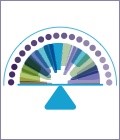Bookmark this page and check back regularly for updates.
Scroll down and select a node to view and participate in an activity.
Latest Activity
Targeting DED: Multiple Treatment Strategies for a Multifactorial Disease (Online CME Monograph)
Monograph
The etiology of dry eye disease (DED) is multifactorial. Identifying underlying modifiable risk factors and DED subtype (eg, aqueous deficient, evaporative, or mixed) provides a guide for personalizing the approach to treatment. This educational activity presents an overview of DED prevalence, risk factors, pathophysiology, diagnosis, and treatment. Clinical trial data on the safety and efficacy of newer topical medications for DED is summarized in a didactic format. In addition, an expert faculty shares insights on DED diagnosis and management through a series of case-based discussions. The desired results of this activity are to cement clinicians’ knowledge of and competence in developing practical strategies for the diagnosis and treatment of DED.

Webcast

Podcast

Monograph

Monograph
